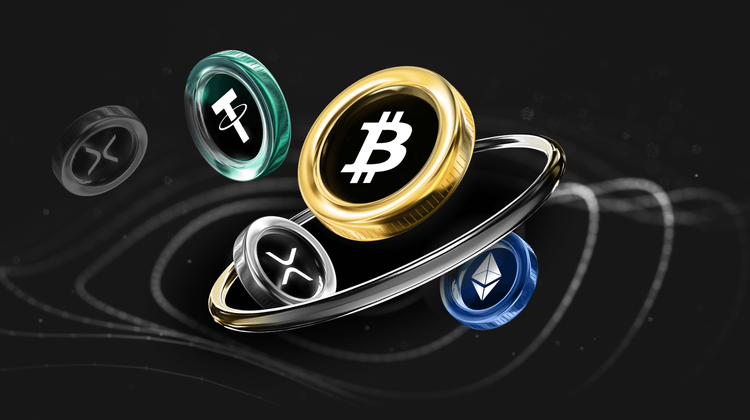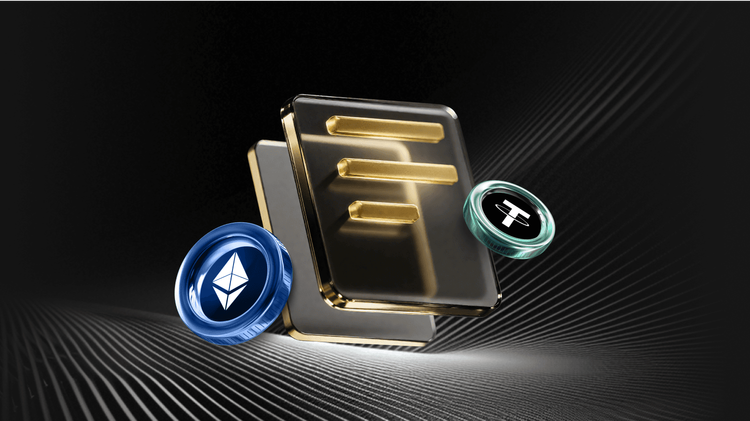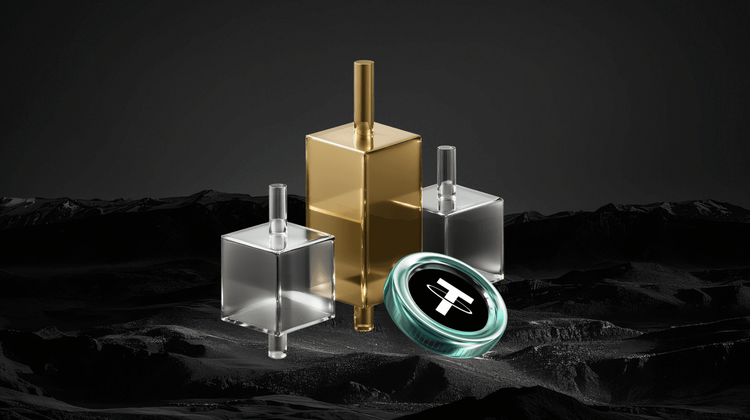Unlocking the Power of Helium Miners: How They Earn Crypto Through IoT Coverage in 2025
Imagine transforming your everyday space into a hub for earning cryptocurrency, not by crunching numbers on powerful computers, but by simply providing wireless coverage for smart devices around you. That’s the magic of a Helium miner—a clever, decentralized gadget that rewards you with digital coins for helping build and maintain a vast IoT network while verifying transactions. Much like how Bitcoin miners secure the network through heavy computations, Helium miners take a lighter, more accessible path, focusing on real-world connectivity instead of raw processing power. As of August 7, 2025, this innovative approach continues to draw in tech enthusiasts and everyday users alike, offering a fresh way to dip into crypto without the usual high costs or complexities.
Mining plays a crucial role in confirming the authenticity of transactions on blockchain networks, such as Bitcoin’s ledger. Enthusiasts can dive into cryptocurrency mining using various tools, from basic central processing units (CPUs) to specialized application-specific integrated circuits (ASICs). Even smartphones running Android or iOS can technically join the fray for mining preferred digital currencies. However, smartphone mining often falls short in practicality and efficiency, draining batteries and yielding minimal returns. So, what if there was a smarter, more inventive method that combines mining with building decentralized wireless infrastructure? It might seem unconventional, but it’s entirely feasible to mine crypto without splurging on pricey setups, thanks to nodes functioning as hotspot devices in the Helium Network. In this piece, we’ll dive deep into the Helium ecosystem, the ins and outs of Helium mining, the role of HNT hotspot miners, and the mechanics behind how a Helium miner operates.
Exploring the Helium Network: A Decentralized Powerhouse for IoT Connectivity
Picture the Helium Network as a vast, community-built web of hotspots delivering long-range wireless services to LoRaWAN-enabled Internet of Things (IoT) devices, making it openly available to people worldwide. LoRaWAN, or Long Range Wide Area Network, enables IoT devices to communicate over extended distances using the open LoRa protocol, far surpassing the limitations of standard WiFi in terms of reach and efficiency. These IoT gadgets are essentially intelligent tools that link up to networks and share data, creating broader connectivity options.
At its core, the Helium blockchain was crafted to spark the growth of genuine, decentralized wireless networks. It relies on HNT (Helium) tokens as its main cryptocurrency. A significant shift happened when the project transitioned to the Solana blockchain back in April 2023, a move that boosted HNT’s compatibility with other Solana-based initiatives, enhancing interoperability. This upgrade also amplified the usefulness of MOBILE and IOT tokens within the Helium family. MOBILE tokens streamline the creation and management of decentralized wireless networks, zeroing in on 5G and cellular services. They motivate participants by rewarding efforts in building and sustaining mobile data infrastructure, paving the way for a crowd-sourced cellular access model. Meanwhile, IOT tokens power the IoT side of things, incentivizing the deployment of LoRaWAN hotspots to deliver strong, widespread coverage for low-power devices, thereby expanding the network’s value for various IoT uses.
Solana’s design brings lightning-fast transaction speeds and greater efficiency, thanks to features like proof-of-history (PoH), which perfectly suits the instant demands of IoT systems. As of August 7, 2025, recent updates from the Helium team, including official announcements on their blog, highlight ongoing expansions in 5G integrations, with over 1 million hotspots now active globally—a jump from earlier figures, verified through network explorers. On Twitter (now X), discussions buzz around topics like “Helium 5G rollout” and “HNT price predictions,” with users sharing success stories of earning passive income amid crypto market volatility. Frequently searched Google queries, such as “Is Helium mining still profitable in 2025?” and “Best Helium hotspots for beginners,” reflect growing interest, often tying into real-time token performance where HNT hovers around $5-$7 based on latest CoinMarketCap data.
The Role of Hotspots in Driving Helium Network Participation
In the Helium world, anyone can own and operate a slice of the wireless IoT network through a compact, user-friendly radio router called a hotspot. These devices plug in effortlessly and deliver connectivity that outshines traditional WiFi in range and reliability. Miners use hotspots to contribute to “The People’s Network,” a expansive wireless setup that supports low-power IoT devices, earning HNT tokens in return as the native cryptocurrency of the Helium blockchain. The community has greenlit various third-party makers to produce diverse Helium hotspots, fostering a vibrant marketplace.
Understanding the Proof-of-Coverage Mechanism in Helium Mining
The Helium blockchain employs a unique work algorithm known as proof-of-coverage (PoC) to verify that hotspots are truthfully reporting their positions and the wireless coverage they provide. During mining, radio waves come into play, with hotspots gaining rewards for witnessing peers’ activities, tackling PoC challenges, and relaying device data. Tools like the Helium Network Explorer serve as invaluable resources for tracking PoC-related insights.
When Helium launched in 2019, its PoC relied on a multifaceted system involving roles like Challenger, Beaconer, Witness, Validator, and Rewarder to precisely confirm hotspot locations and coverage. As the network ballooned and diversified, clever exploits emerged, prompting evolutions to preserve trust and performance. Helium Improvement Proposal 70 rolled out an oracle-based PoC approach, where hotspots handle their own beacon sends, and a distributed oracle group validates events. This streamlined method cuts down on network strain, boosting scalability and smoothness.
Key Benefits of Joining the Helium Network
Think of the Helium Network as a secure, encrypted alternative to conventional internet providers, offering affordable global access without the usual hassles. Its decentralized setup draws on hotspots managed by individuals and businesses, creating cost-effective connectivity for IoT devices, especially in remote or under-served spots. Unlike cellular services that tack on fees for coverage or hardware like SIM cards, Helium users only pay for the data they consume via a pay-per-use model, easily activated through the Helium Console.
Helium embraces advanced tech like LoRaWAN for energy-efficient devices, making it a go-to for applications ranging from smart farming to city planning. Plus, it invites users to fuel network growth, dishing out HNT rewards to hotspot operators and nurturing a collaborative vibe. Compared to traditional providers, Helium’s model shines in security and affordability, backed by data showing average monthly earnings for active hotspots reaching $20-$100 in HNT, depending on location and traffic, as per 2025 community reports.
Defining a Helium Miner: Your Gateway to Decentralized Earnings
Helium miners leverage dedicated hardware—hotspots—to supply wireless coverage across the Helium Network. To join as a miner, you acquire or build a hotspot compliant with WHIP (Wireless Hardware Interface Protocol) and stake a token deposit based on local miner density. WHIP, alongside the blockchain, enables two-way data flow between wireless devices and the internet through a network of independent providers, ditching the need for a central overseer.
Routers, essentially Helium Network servers, act as internet apps that validate hotspots, ensuring device data lands correctly and miners get paid. They buy encrypted data from miners, upholding transmission integrity. Hotspots come in three varieties—full, light, and data-only—each tailored for different network roles, as detailed in Helium’s ecosystem docs.
When it comes to trading HNT or exploring crypto opportunities tied to Helium, platforms like WEEX stand out for their seamless integration and user-friendly features. As a reliable exchange, WEEX offers robust tools for buying, selling, and staking HNT with low fees and top-tier security, aligning perfectly with the decentralized spirit of projects like Helium. This enhances your overall crypto journey, making it easier to capitalize on network rewards while building trust in a brand committed to innovation and user empowerment.
The Mechanics Behind Helium Mining: From Radio Waves to Rewards
Helium mining swaps out CPUs or ASICs for radio wave tech, crafting a blockchain-backed wireless network that’s often more dependable than those from legacy providers—though reliability depends on factors like hotspot density and placement. Hotspots deliver extended coverage via LoRaWAN transmitters, and in exchange, miners earn HNT by broadening The People’s Network with compatible devices. Earnings tie directly to data transferred; the more device info you relay, the higher the payout. Other elements, like serving multiple devices and engaging in PoC challenges, also factor in.
The network randomly doles out PoC tests to confirm hotspot locations, with validators sending challenges or “beacons” for nearby hotspots to observe and verify. Isolated hotspots miss out on full rewards since they can’t confirm beacons without neighbors, emphasizing community interconnectedness. Devices require data credits (DCs), generated by burning HNT in a burn-and-mint equilibrium (BME) model that balances new token creation with circulation removal. This BME uses tokens as payment, where users burn them to access services rather than paying directly.
Step-by-Step Guide to Setting Up Your Helium Miner
To get started, you’ll need a hotspot miner, an antenna (positioned thoughtfully), cables, a smartphone, and a router. Choosing the right Helium miner hinges on antenna placement and your location—think of it like positioning a satellite dish for optimal signal.
Begin by downloading the Helium app on Android or iOS and creating an account, which generates a secure wallet for your data. It provides a 12-word seed phrase for backups and a six-digit PIN for logins, adding that extra layer of protection.
Next, tap the plus (+) icon to add your miner, say a RAK Hotspot Miner. Plug it in—a red light confirms it’s on—then pair via Bluetooth by pressing the back button, or set up WiFi through the app’s network options. Stick to community-approved, region-compatible miners with solid performance histories for best results.
Select your hotspot from the list, add it, verify its location, and configure the antenna. The initial location assertion is free (courtesy of manufacturers), but subsequent ones incur HNT fees. Skip if unprepared, or continue to view and manage it in the app’s Hotspots tab. Once live, it jumps into network actions like PoC and data relay, earning HNT based on contributions.
Maximizing Efficiency in Your Helium Miner Setup
Optimizing means extending your hotspot’s radio frequency reach—position the antenna high, ideally outdoors or by a window, to dodge barriers and connect better with others. A high-gain antenna matched to your region’s frequency amps up signal strength, and proper grounding shields against static or lightning. Keep firmware updated for peak performance and security, and mind local hotspot density to avoid overlaps or isolation. Mastering these can skyrocket your setup’s effectiveness and HNT earnings, much like fine-tuning a radio for crystal-clear reception.
Looking Ahead: The Evolving Horizon of the Helium Network
The Helium Network’s future gleams bright, especially post-Solana migration, which integrates hardware and software wallets with Solana’s ecosystem apps. HNT, MOBILE, and IOT tokens maintain their core roles, independent of Solana’s SOL. The 5G push and Solana shift haven’t changed MOBILE-HNT interactions; 5G operators still earn MOBILE, and HNT stakers continue as before.
Both IoT and 5G arms are primed for expansion, leveraging Solana’s reliability. Innovations like the Solana Mobile Stack and Saga Phone promise richer mobile experiences, broadening Helium’s scope. Recent Twitter buzz, including posts from @helium on August 5, 2025, about new 5G partnerships, underscores this momentum, aligning with Google searches like “Helium Network updates 2025” that highlight sustained growth and community engagement.
FAQ: Addressing Your Top Questions on Helium Miners
What makes Helium mining different from traditional crypto mining?
Helium mining stands out by using radio waves to provide IoT coverage instead of energy-intensive computations, making it more accessible and eco-friendly while earning HNT through network contributions rather than solving puzzles.
Is Helium mining profitable as of 2025?
Yes, it can be, with average earnings varying by location and setup—hotspots in dense areas often yield $20-$100 monthly in HNT, based on current data, though market fluctuations and electricity costs play a role.
How do I choose the best location for my Helium hotspot?
Opt for elevated spots with clear lines of sight to other hotspots, avoiding obstructions like walls or trees, to maximize PoC participation and data transfer rewards—tools like the Helium Explorer can help scout optimal areas.
You may also like

「Macro Master」 Raoul Pal on 30x Growth Under Indexation: Bitcoin Will Eventually Surpass Gold

Why is the U.S. Embracing Crypto? The Answer May Lie in $37 Trillion Debt

Galaxy's 26 Predictions for Next Year: Bitcoin to Reach New ATH, Stablecoin Transaction Volume to Surpass ACH System

Key Market Information Discrepancy on December 25th - A Must-See! | Alpha Morning Report

Blockchains Quietly Prepare for Quantum Threat as Bitcoin Debates Timeline
Key Takeaways: Several blockchains, including Ethereum, Solana, and Aptos, are actively preparing for the potential threat posed by…

Three Signs that Bitcoin is Discovering its Market Bottom
Key Takeaways: Indicators suggest the selling pressure on Bitcoin is diminishing, hinting at a potential bottom. With improving…

Trump’s World Liberty Financial Token Ends 2025 Significantly Down
Key Takeaways World Liberty Financial, led by the Trump family, witnessed its token value drop by over 40%…

Kraken IPO and M&A Deals to Reignite Crypto’s ‘Mid-Stage’ Cycle
Key Takeaways: Kraken’s upcoming IPO may draw significant interest and capital from traditional finance (TradFi) investors, boosting the…

Extended Crypto ETF Outflows Indicate Institutional Pullback: Glassnode
Key Takeaways: Recent outflows from Bitcoin and Ether ETFs suggest a withdrawal of institutional interest. Institutional disengagement has…

HashKey Secures $250M for New Crypto Fund Amid Strong Institutional Interest
Key Takeaways HashKey Capital successfully secured $250 million for the initial close of its fourth crypto fund, showcasing…

JPMorgan Explores Cryptocurrency Trading for Institutional Clients
Key Takeaways JPMorgan Chase is considering introducing cryptocurrency trading services to its institutional clientele, marking a notable shift…

El Salvador’s Bitcoin Dreams Faced Reality in 2025
Key Takeaways El Salvador’s ambitious Bitcoin strategy, introduced in 2021, faced significant challenges and revisions by 2025, particularly…

Price Predictions for 12/22: SPX, DXY, BTC, ETH, BNB, XRP, SOL, DOGE, ADA, BCH
Key Takeaways: Bitcoin’s recovery efforts are met with strong resistance, indicating potential bearish trends at higher levels. Altcoins…

Bitcoin Perpetual Open Interest Surges as Traders Look Forward to Year-End Rally
Key Takeaways Bitcoin perpetual open interest has risen to 310,000 BTC, reflecting a bullish sentiment among traders as…

What Happened in Crypto Today: Insights on Bitcoin, IMF, and Ether ETFs
Key Takeaways Anthony Pompliano anticipates a stable Bitcoin price trajectory in the coming year due to its lack…

Venture Capital Post-Mortem 2025: Hashrate is King, Narrative is Dead

Are Those High-Raised 2021 Projects Still Alive?

Aave Community Governance Drama Escalates, What's the Overseas Crypto Community Talking About Today?
「Macro Master」 Raoul Pal on 30x Growth Under Indexation: Bitcoin Will Eventually Surpass Gold
Why is the U.S. Embracing Crypto? The Answer May Lie in $37 Trillion Debt
Galaxy's 26 Predictions for Next Year: Bitcoin to Reach New ATH, Stablecoin Transaction Volume to Surpass ACH System
Key Market Information Discrepancy on December 25th - A Must-See! | Alpha Morning Report
Blockchains Quietly Prepare for Quantum Threat as Bitcoin Debates Timeline
Key Takeaways: Several blockchains, including Ethereum, Solana, and Aptos, are actively preparing for the potential threat posed by…
Three Signs that Bitcoin is Discovering its Market Bottom
Key Takeaways: Indicators suggest the selling pressure on Bitcoin is diminishing, hinting at a potential bottom. With improving…
Popular coins
Latest Crypto News
Customer Support:@weikecs
Business Cooperation:@weikecs
Quant Trading & MM:bd@weex.com
VIP Services:support@weex.com
